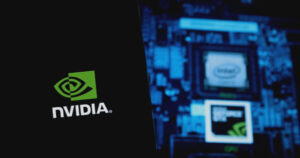Transforming Parkinson’s Diagnosis: The AI Breakthrough You Need to Know About
By Alvin Lang
Published on April 11, 2025
In a revolutionary leap forward for medical diagnostics, researchers at the University of Florida, in collaboration with leading medical centers, have developed an innovative AI technology poised to enhance the diagnosis of Parkinson’s disease through the use of standard MRI scans. This exciting advancement, reported by NVIDIA, promises to not only expedite the detection process but also improve treatment outcomes for patients, fundamentally transforming the landscape of Parkinson’s care.
The Game-Changing AI Diagnostic Tool
Known as the Automated Imaging Differentiation for Parkinsonism (AIDP), this machine learning model is equipped to differentiate between Parkinson’s disease and other similar neurological disorders, such as multiple system atrophy (MSA) and progressive supranuclear palsy (PSP). Early-stage brain scans can often present challenges in determining the exact condition, which can lead to misdiagnosis and a delay in receiving effective treatments.
Michael S. Okun, senior author of the study and medical advisor at the Parkinson’s Foundation, emphasizes the potential of AIDP to refine routine diagnostic practices. This non-invasive technology eliminates the need for specialized scans, making it accessible and efficient for widespread clinical use.
Key Findings from the Study
The study, published in JAMA Neurology, highlights AIDP’s ability to streamline early detection and treatment—a critical goal during Parkinson’s Awareness Month and World Parkinson’s Day. The AI was trained on an impressive dataset of 645 brain scans, which included case studies from new patients as well as postmortem examinations. Focused on subtle changes in brain tissue associated with Parkinson’s and related disorders, AIDP has emerged as a cutting-edge tool for diagnosing neurodegenerative diseases.
Lead author David Vaillancourt pointed out how AIDP detects specific neurodegenerative patterns, essentially creating a "pathological fingerprint" for each condition. Utilizing high-performance NVIDIA GPUs, including the Quadro P400, and employing the TensorFlow library along with NVIDIA CUDA, the model was trained over a period of 36 hours.
Stellar Accuracy and Future Possibilities
The accuracy rates of AIDP are nothing short of remarkable. With a diagnostic accuracy rate of 95%, it significantly outperforms expert neurologists in challenging situations. Moreover, in postmortem assessments, the AI achieved a staggering 94% match with confirmed diagnoses, compared to only 82% for traditional clinical diagnosis methods.
Such high accuracy not only reduces misdiagnoses but also alleviates the emotional strain experienced by patients and their families. AIDP’s flexibility further enhances its potential; it can be implemented in diverse healthcare environments, from large hospitals to remote telehealth platforms, ensuring that high-quality diagnostics are accessible to all.
Additionally, AIDP holds great promise for advancing clinical trials by ensuring the correct selection of patients—a challenge that has long plagued Parkinson’s research. Currently licensed by Neuropacs, AIDP is expected to be integrated into clinical settings pending regulatory approvals.
Why This Matters
As part of the Extreme Investor Network’s commitment to sharing transformative advancements in technology and healthcare, this development underscores how AI can significantly impact patient care. The implications of AIDP extend beyond just Parkinson’s diagnosis; they reflect a growing trend where AI technologies empower physicians, enhance patient outcomes, and redefine standards in medical practice.
For those invested in the future of healthcare and technology, keeping an eye on these advancements isn’t just advisable—it’s essential. With AI reshaping diagnostics, we stand on the brink of a new era in patient care, accessible to all, regardless of location.
For further insights into the study, visit the official NVIDIA blog. Stay updated with Extreme Investor Network for groundbreaking developments at the intersection of technology and health!
Image source: Shutterstock

